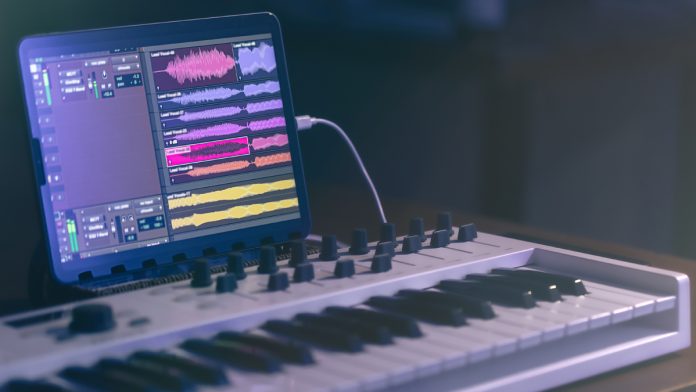Digital Signal Processing (DSP) has proven integral in refining and transforming audio content. Cutting-edge research now focuses on real-time methodologies that empower producers, engineers, and artists to sculpt sounds dynamically during live performances and studio sessions. This article provides an in-depth look at various aspects of DSP, addressing both classical concepts and modern techniques, while highlighting Advanced DSP Algorithms for Real-Time Sound Manipulation to meet the rigorous demands of contemporary audio applications.
| Table of Contents | |
|---|---|
| I. | Fundamentals of Digital Signal Processing in Audio |
| II. | Real-Time Constraints and System Optimization |
| III. | Spectral Analysis and Time-Frequency Transformations |
| IV. | Adaptive Filtering and Noise Reduction Techniques |
| V. | Phase Vocoder and Pitch Shifting Algorithms |
| VI. | Reverberation, Spatialization, and Room Acoustics |
| VII. | Nonlinear Processing and Harmonic Enhancement |
| VIII. | Multirate Processing and Sample Rate Conversion |
| IX. | Integration of Machine Learning and DSP |
| X. | Coding Efficiency and Data Compression in Real-Time DSP |
Fundamentals of Digital Signal Processing in Audio
Digital Signal Processing forms the backbone of modern audio engineering. By converting analog sound waves into digital signals, engineers analyze, modify, and enhance musical content with precision. Techniques such as quantization, filtering, and sampling are foundational for crafting the audio spectrum. These methods ensure high fidelity and creative flexibility in both recording and live sound scenarios, reinforcing the core principles that drive technological evolution in music production.
Real-Time Constraints and System Optimization
Real-time DSP demands rigorous system optimization to minimize latency while processing complex audio tasks. Engineers refine hardware and software architectures to guarantee error-free, instantaneous sound manipulation. Achieving optimal performance often requires parallel processing and resource management to address the computational intensity of live audio environments. This discipline seamlessly integrates with Advanced DSP Algorithms for Real-Time Sound Manipulation, ensuring that every performance is executed with precision and responsiveness.
Spectral Analysis and Time-Frequency Transformations
Spectral analysis dissects audio into its constituent frequencies, enabling detailed examination and manipulation of sound. Time-frequency transformation techniques, like the Short-Time Fourier Transform (STFT), reveal transient characteristics and harmonics in music. This analysis empowers dynamic equalization, real-time effects, and noise tracking, enhancing overall sonic quality while facilitating targeted improvements in instrument timbres and acoustic signatures.
Adaptive Filtering and Noise Reduction Techniques
Adaptive filters continuously adjust to changing audio conditions to maintain clarity and reduce unwanted noise. By analyzing signal patterns and environmental factors, these filters distinguish between desired sound and background interference. This real-time processing is essential for live performances and broadcast scenarios, ensuring that clarity is preserved regardless of unpredictable acoustic challenges. In this context, high-performance algorithms optimize sound without sacrificing natural character.
Phase Vocoder and Pitch Shifting Algorithms
The phase vocoder is a powerful tool for transforming pitch and time independently, enabling creative sound-shaping without degrading quality. Pitch shifting algorithms harness this principle, allowing real-time modulation of musical notes and vocal tones for innovative effects. Such techniques facilitate seamless key changes and tempo adjustments during live sessions, merging technical precision with artistic expression. Incorporation of Advanced DSP Algorithms for Real-Time Sound Manipulation enhances versatility and studio spontaneity.
Reverberation, Spatialization, and Room Acoustics
Reverberation and spatialization simulate the acoustic properties of diverse environments, from intimate studios to vast concert halls. By modeling room acoustics, DSP systems create immersive audio experiences, accurately replicating natural echoes and sound diffusion. This capability supports realistic spatial imaging, aiding sound engineers in placing elements within a three-dimensional auditory space and ensuring that each performance resonates with genuine ambience.
Multirate Processing and Sample Rate Conversion
Multirate processing streamlines data handling by simultaneously operating at different sampling frequencies. Sample rate conversion techniques facilitate format transitions while preserving audio integrity. This efficiency is critical in integrating legacy audio systems with modern digital environments. By harnessing Advanced DSP Algorithms for Real-Time Sound Manipulation, audio professionals can seamlessly merge disparate digital sources, ensuring uniformity in sound quality across various platforms and playback systems.
Integration of Machine Learning and DSP
Machine learning is increasingly intertwined with DSP, offering advanced predictive models for audio analysis and processing. Intelligent algorithms detect patterns and optimize sound parameters by learning from vast audio datasets. This synergy allows adaptive improvements in effects, enhanced mixing decisions, and innovative sound design, pushing the boundaries of what is achievable in real time while introducing a new era of smart audio manipulation and automation.
Coding Efficiency and Data Compression in Real-Time DSP
Efficient coding and compression are paramount for managing high-volume audio data streams without compromising quality. Streamlined algorithms reduce file sizes and computational burdens, enabling swift, real-time processing, and broadcast. These methodologies ensure that audio remains pristine even under the constraints of limited bandwidth and hardware capacities. Employing Advanced DSP Algorithms for Real-Time Sound Manipulation in this domain leads to improved system performance and a more dynamic user experience.

